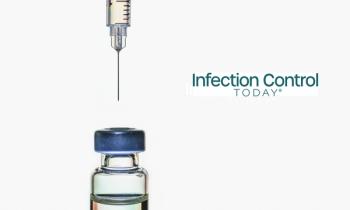
Checklist Program Reduces Infections, Saves Lives and Money
A quality improvement program that saves lives by dramatically reducing potentially lethal bloodstream infections in hospital intensive-care units across the state of Michigan also saves those hospitals an average of $1.1 million a year, new Johns Hopkins research suggests.
As policymakers frantically search for ways to cut healthcare costs, the findings also give weight to those who have long suggested that reducing preventable harm isnt just good for patient safety, but also the bottom line, the researchers say. In the Michigan program, there was a tenfold return on investment, they say.
"We already knew that the Michigan project saved lives and reduced infections," said Peter J. Pronovost, MD, PhD, director of Johns Hopkins Armstrong Institute for Patient Safety and Quality and leader of the study described in the September/October issue of the American Journal of Medical Quality. "Now we know that by preventing infections, hospitals actually save money too."
The new study showed that each central line-associated bloodstream infection in Michigan costs a hospital an average of $36,500 to treat. Implementing the patient safety program cost roughly $3,375 per infection averted between 2003 and 2005. The cost of putting the program in place, mostly in devoted staff time, was an average of $161,000 per hospital.
"It makes common sense that giving higher-quality care would save you money, but before this, there was very little empirical evidence that it did," he says. "Now we have it."
Pronovost, also a professor of anesthesiology and critical care medicine and Johns Hopkins University School of Medicines senior vice president for patient safety and quality, notes that his study does not show whether other types of quality improvement initiatives will yield similar financial benefit, but he suspects that some will.
Central lines are thin plastic tubes used regularly for patients in ICUs to administer medication or fluids, obtain blood for tests, and directly gauge cardiovascular measurements, such as central venous blood pressure. But the tubes are easily contaminated, and each year roughly 80,000 patients with central lines develop life-threatening infections. Some 31,000 are estimated to die nearly as many as die from breast cancer annually and the collective cost of treating them may be as high as $3 billion nationally. Recently, the Centers for Disease Control and Prevention reported these bloodstream infections decreased by 58 percent between 2001 and 2009.
The Michigan program, developed at Johns Hopkins, includes the much-heralded cockpit-style checklist for doctors and nurses to follow when placing a central-line catheter, and five basic steps from handwashing to avoiding placement in the groin area, where infection rates are higher. Along with the checklist, the program promotes a "culture of safety," composed of science of safety education; training in how to identify safety problems, implement solutions, and measure improvements; and empowering all team members, no matter how senior or junior, to question each other and stop procedures if safety is compromised.
Pronovost and his team have taken the checklist system across the globe, with rollouts in the United Kingdom, Spain, parts of Peru and even Pakistan. They are also in the process of putting it in nearly all 50 states, in partnership with state health departments and hospital associations.
Much of the healthcare savings resulting from his initiative go to insurers both public and private who are spared the cost of treating these bloodstream infections and subsequent complications, Pronovost says. He recommends that insurers invest in helping hospitals implement and develop infection prevention and other quality improvement programs, since the savings ends up in their coffers.
"Strategies to improve quality should be at the forefront of efforts to trim health care costs," he says. "Reducing preventable harm may be the least controversial way to save money and should definitely get more attention."
The research was funded by Blue Cross and Blue Shield of Michigan, through the Michigan Hospital Association.
Other Hopkins researchers on the study include Hugh R. Waters, PhD; Elizabeth Johnson Colantuoni, PhD; Sean M. Berenholtz, MD; Christine A. Goeschel, ScD, MPA, MPS, R.N.; Dale Needham, MD, PhD; Julius C. Pham, MD; and Allison Lipitz, PhD.
Newsletter
Stay prepared and protected with Infection Control Today's newsletter, delivering essential updates, best practices, and expert insights for infection preventionists.






